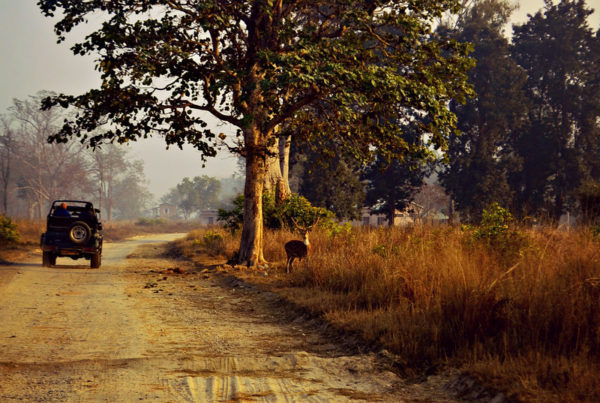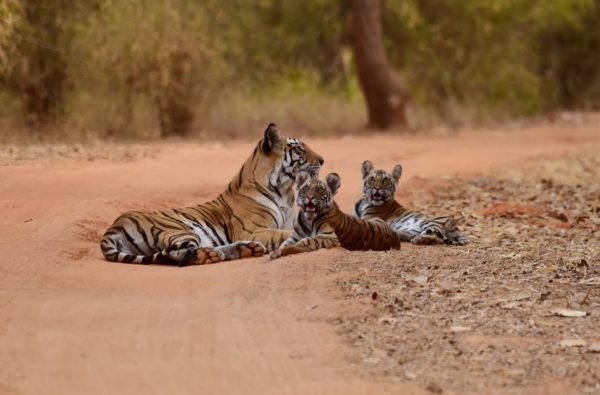A Veteran Safari Goer’s Guide to going on Safari in India
Created by Harsh Sonawala,Last Updated on December 2, 2020
Going on a safari in India is always magical – this is a country of diverse landscapes, and each has its own wild treasures.
Tigers, leopards and lions are big draws, as is the Asian elephant, but there are also bears, a huge variety of deer, and many other smaller creatures are just as intriguing to spot. And we haven’t even mentioned the avifauna!
However, on all safari holidays, you must remember that you’re entering someone else’s space and treat it accordingly. Admittedly, there might not be much enforcement of the rules (and even common sense sometimes!)
While you’re on safari in India, it’s always a good idea to be a responsible traveller out in the jungle, so you leave the lands just as untouched as you find them! Here are some tips on how to stay responsible while going on safari in India.
And if you’re looking for inspiration, here’s a guide to going on a safari.
 Observe wildlife quietly from distance (Photo Credit – Sreeram Narayan)
Observe wildlife quietly from distance (Photo Credit – Sreeram Narayan)
Keep it on the down-low
Yes, it’s extremely exciting to spot a tiger stalking a deer – but cheering the poor cat on might just alert the prey that it’s being stalked! And the same goes for the animals that seem to be ignoring you, staying just out of your perfectly framed photograph.
Clapping, hollering or making any other loud, disturbing sounds is a huge no-no out in the forest. Not only are you disturbing the animals (who tend to be shy and wary), you might also be disrupting your fellow travellers’ long-awaited safari holidays!
Embrace the sounds of the wild instead. If everyone’s quiet, you’ll be able to hear birdsong, the rustling of leaves, crunch of undergrowth… all signs that could guide you towards your next spectacular sighting as well!
 Leopards are excellent tree climbers (Photo Credit – Syna Tiger Resort)
Leopards are excellent tree climbers (Photo Credit – Syna Tiger Resort)
Pick your clothes carefully
Who would have ever thought that you’d have to dress appropriately while out in the jungle? You’re waking up at the crack of dawn, yawning as you climb into a safari vehicle.
But when you plan your safari trip, make sure you pack enough neutral and forest-coloured clothes – think greens, browns and ochres – so that you blend in better with the surroundings!
Experts say that bright, flamboyant colours can often disturb wildlife, and it’s best to avoid them when you’re on safari. While we’re on the subject, another thing to keep in mind is that most creatures out there have a sense of smell that’s way more powerful than yours is!
While you should definitely bathe, stay away from strongly-scented soaps and shower gels, and skip those perfumes and colognes! All these smells can confuse animals, which is something we should try to avoid.
 Indian Vultures (Photo Credit – Rob Snijders)
Indian Vultures (Photo Credit – Rob Snijders)
Think beyond the tiger
While Indian tiger safaris are famous (and rightly so), there’s so much more to see in Indian jungles!
Depending on where you’re going on a safari in India, you’ll have the opportunity to see creatures as diverse as sloth bears, the muscled gaur (Indian bison), the one-horned rhino, Asian elephant, Malabar flying squirrel, and even the diminutive red panda!
So, don’t limit yourself to tiger safaris – you’ll be surprised at the surprises the Indian forests can throw at you!
 Nilgiri Tahr at Eravikulam National Park (Photo Credit – Nandhu)
Nilgiri Tahr at Eravikulam National Park (Photo Credit – Nandhu)
Choose your safari guides well – and listen to them!
Picking who you go on a safari with can be the difference between having a mediocre safari experience and one that you will remember for a lifetime. You should, of course, pick an operator that follows responsible practices – stay away from any that ‘guarantee’ sightings.
Having a qualified naturalist with you will add a tremendous amount to your safari. Trust us, it’s worth spending a little bit extra on a safari excursion that includes this.
And once you’re out on a safari, listen to what your guides and naturalists are saying! They’re experts in the area, and know the jungles way better than you. They know if (and where) you can get out of the safari vehicles, when you should leave the animals alone, and when it’s safe to linger!
 Elephant having mud bath (Photo Credit – Aashish Pareek)
Elephant having mud bath (Photo Credit – Aashish Pareek)
Pay attention to the animals
And we don’t just mean ‘look at them!’ While subtle clues are more difficult to pick up on, if you pay attention, you’ll be able to tell what sort of mood the creatures you’re looking at are in.
The guide or naturalist accompanying you might signal that they’re nervous. This could be a sign that there’s a predator nearby. Or perhaps, you’ve come across a mother that’s trying to protect her babies!
Respecting behavioural cues that the animals are sending out will make for a more fulfilling safari experience for you. It will also make the jungle a more comfortable place for the animals – win-win, we say!
 Tigress with cute cubs (Photo Credit – Syna Tiger Resort)
Tigress with cute cubs (Photo Credit – Syna Tiger Resort)
Going on safari in India – the BOTTOM-LINE
We’ve said a lot about what to do and what not to do. But the most important thing to remember is – going on a safari is supposed to be fun! As long as you pick your operators well and keep these easy-to-follow guidelines in mind, you’ll have a great holiday.
If you aren’t sure what sort of safari you’re interested in, get in touch if you need help planning your Indian safari holidays. You could also check out these articles on Safaris in South India and Safaris in North India for inspiration!
helping you travel your way
Everything you need to know about India is here We have tried writing about everything you may need help with for your trip to India, If you need help in planning a trip to India Get in touch with us to to plan your trip of a life time.







